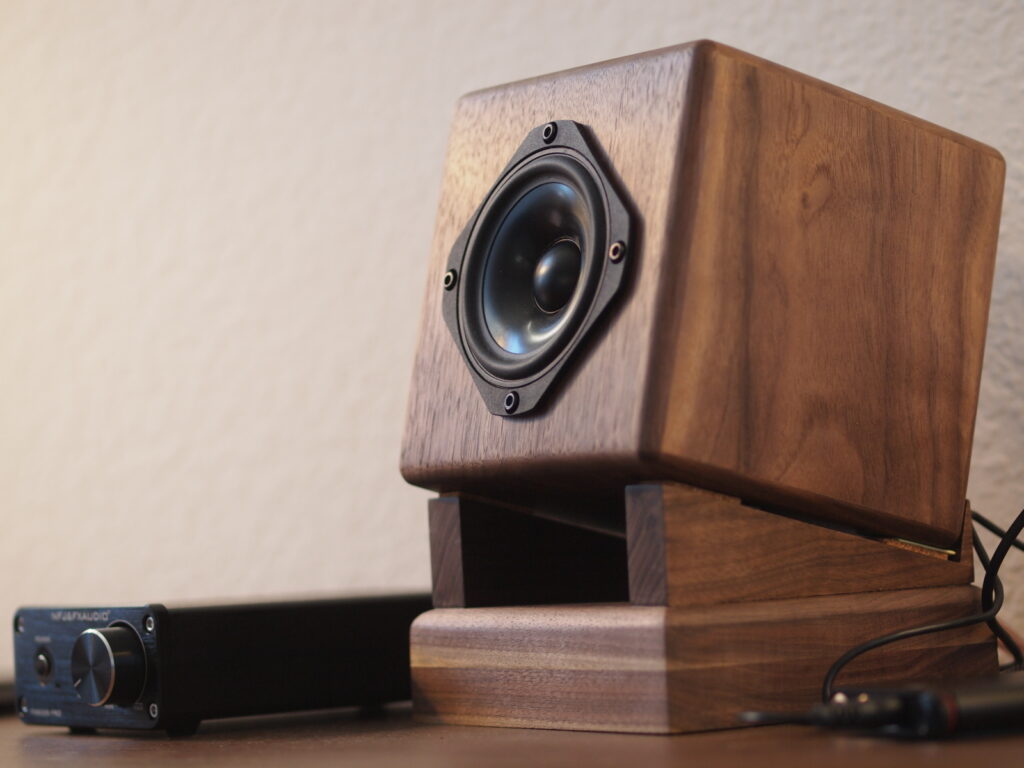
SCAE, pronounced as ‘sky’, stands for Swartz Center for Audio Engineering and refers to the unofficial small circle launched in the Swartz Center for Computational Neuroscience in UC San Diego in 2018. The current members are me and a grad student. We have worked on speaker measurement and parameter estimate using ARTA http://www.artalabs.hr/ and optimizations of enclosure and crossover network designs mainly using Speaker Workshop http://www.claudionegro.com/.
SCAE-01 ‘Dice K’ is the first project (not a product for sale) from SCAE. Due to COVID situation, I did all the processes alone. SCAE-01 ‘Dice K’ was made upon the request by one of my collaborators (hereafter ‘the client’). He wanted to have a pair of small desktop speakers, so I offered him a plan to build something if he pays the cost. The name of the work was proposed by client’s wife (she must be genius). K stands for, let’s say, kale (καλή) meaning ‘beautiful’, assuming dice is a female noun, as found in the word kaleidoscope.
The most critical choice for the speaker design is the driver unit. Because cost was not a problem for the client, I chose Wavecor FR084WA02 for the excellent THD (See the spec sheet from the link: http://www.wavecor.com/html/fr084wa01_02.html). The driver boasts < 0.25% down to 300Hz and < 0.5% to 200Hz. But it becomes worse below 200Hz and it is 3.5% at 100Hz. This is inevitable for a 3.25 inch driver in general and not a fault of this particular driver. The problem of this driver is the rising frequency response curve from 5kHz to 20 kHz by about 10dB. Typically, such frequency response increase at higher frequency range is benign and may not be bothering. That being said, I still wanted to mitigate it. However, I did not want to use passive elements because they may spoil beauty of using a full-range driver. Thus, instead of designing a network, I chose a different, more experimental approach.
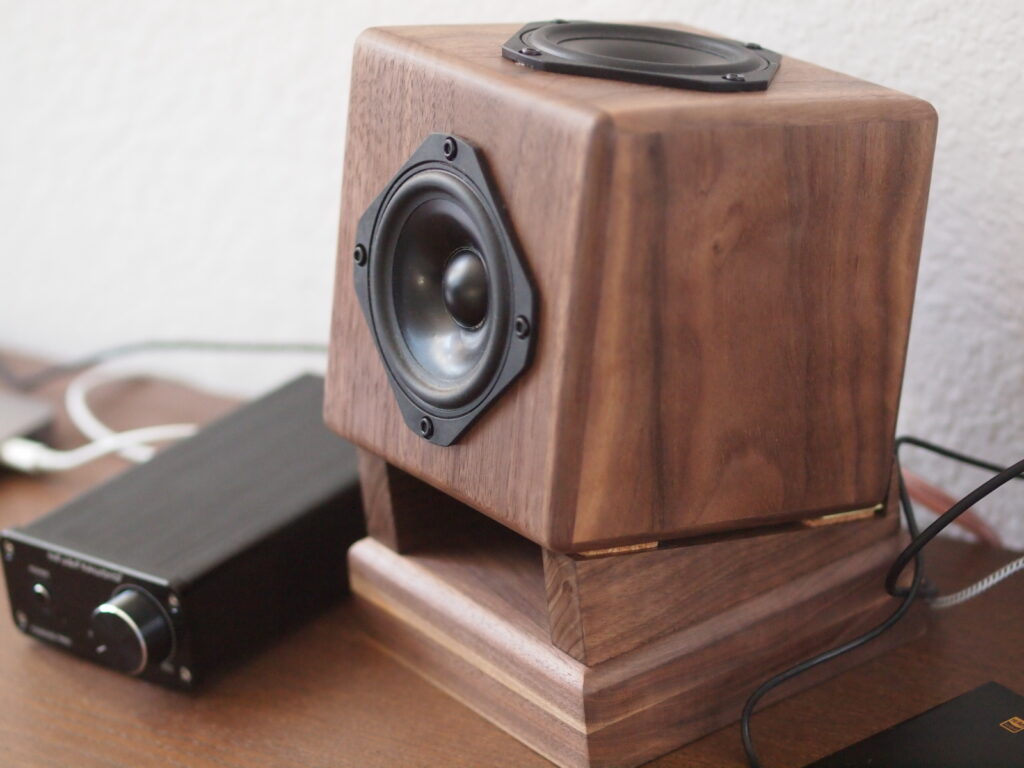
I added another driver on the top face of the enclosure. There are several aims for this design. The main aim is to gain +6dB (parallel connection, hence 8-ohm version of the deriver was selected) below 3 kHz to compensate the rising frequency response from 5kHz to 20kHz without using passive components. This is predicted by theory of radiation impedance and confirmed in the spec sheet (up to 60 degrees off axis). The 90-degrees off-axis driver works as a frequency response compensator from low to middle frequency range. The second aim of the orthogonally aligned drivers is to obtain the indirect sound reflected, an homage to Bose.
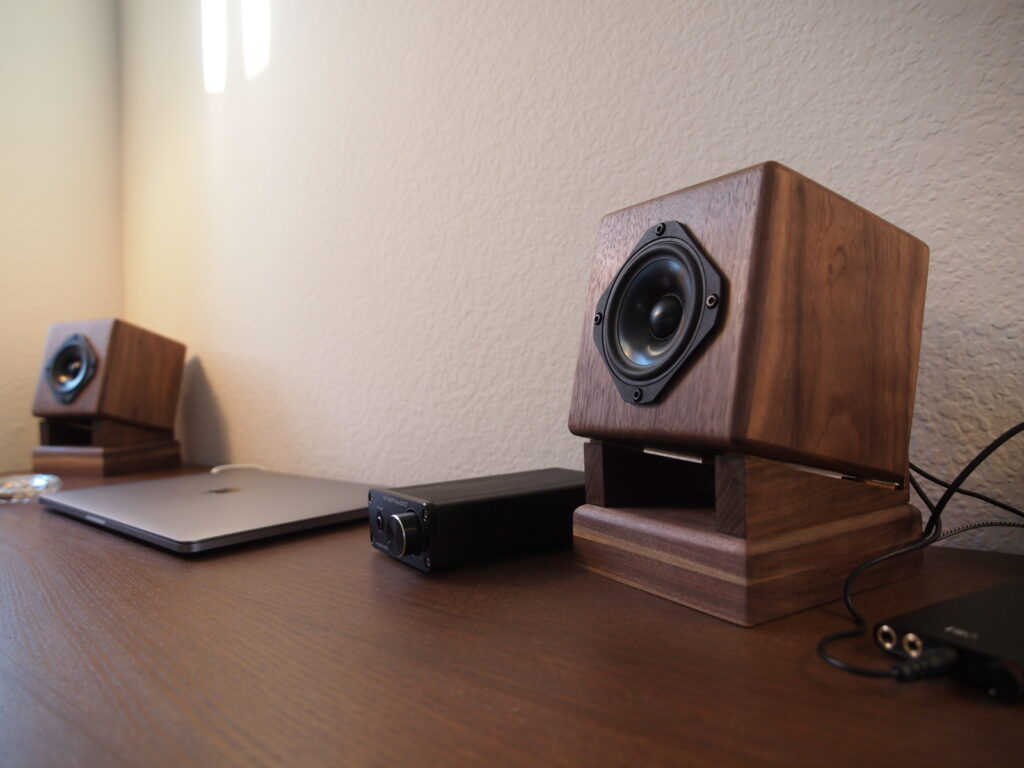
The enclosure adopted a sealed design. The driver’s Qt is around 0.9 (from the spec sheet), which is suitable for this choice. A sealed enclosure does not produce as much base as a base-reflex design enclosure, but instead it can achieve much lower distortion in the lower frequencies. The capacity is around 1.5 liter. 21 g of Acousta-stuf is filled inside the enclosure. The size of the enclosure is compact, the base’s footprint is 14 x 14 cm.
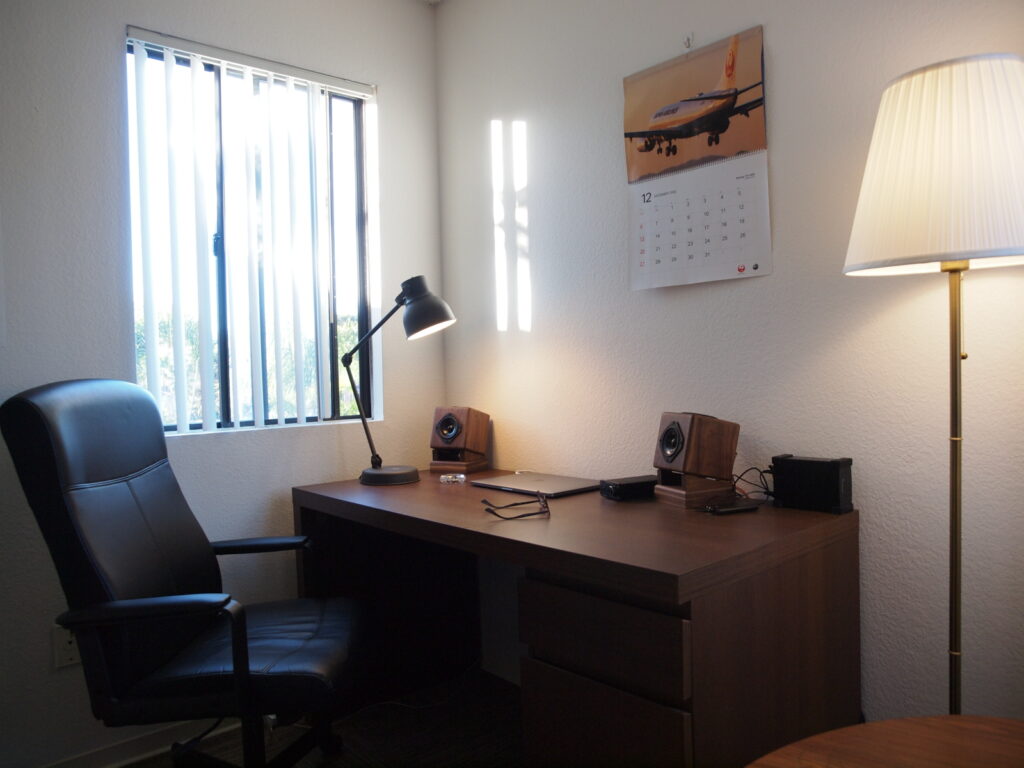
The material of the enclosure is walnut. It is not a veneer, but 100% walnut. No screw or nail was used. I used a router to apply 3/8 roundover on the edges. I finished the surface with home-made bee’s wax. Inside the enclosure, I applied polyurethane finish for protection.
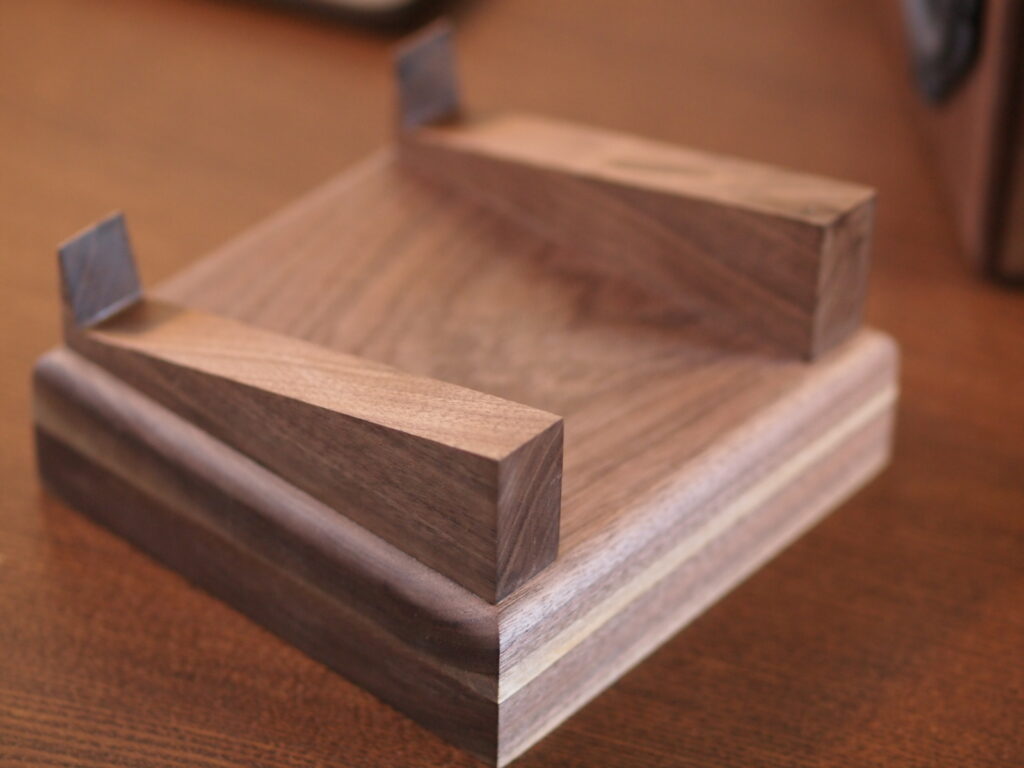
The base is also made of walnut. The angle of the cutout in the rail is 15 degrees. This angle was determined by measurement at client’s desk and his ear position.
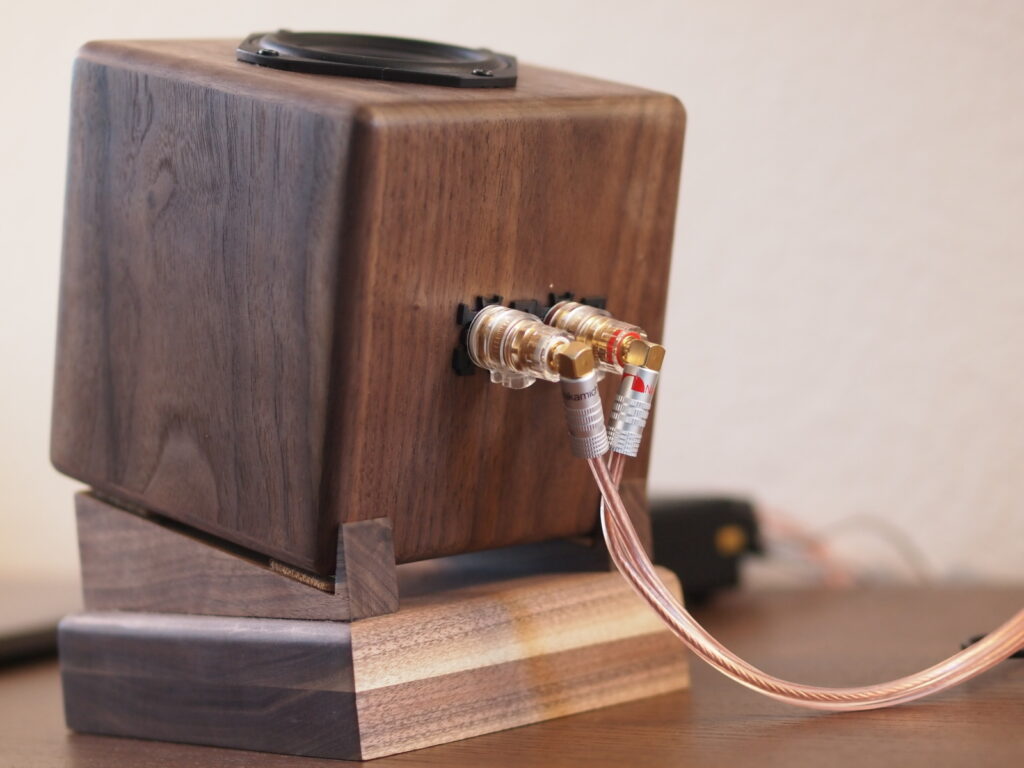
The binding posts are WBT0765. This is like a joke because these are as expensive as two of the driver units. But the client wanted to make the speakers absolutely special and cost was not a problem, so I chose WBT0765 simply because they are the best binding posts I could find.
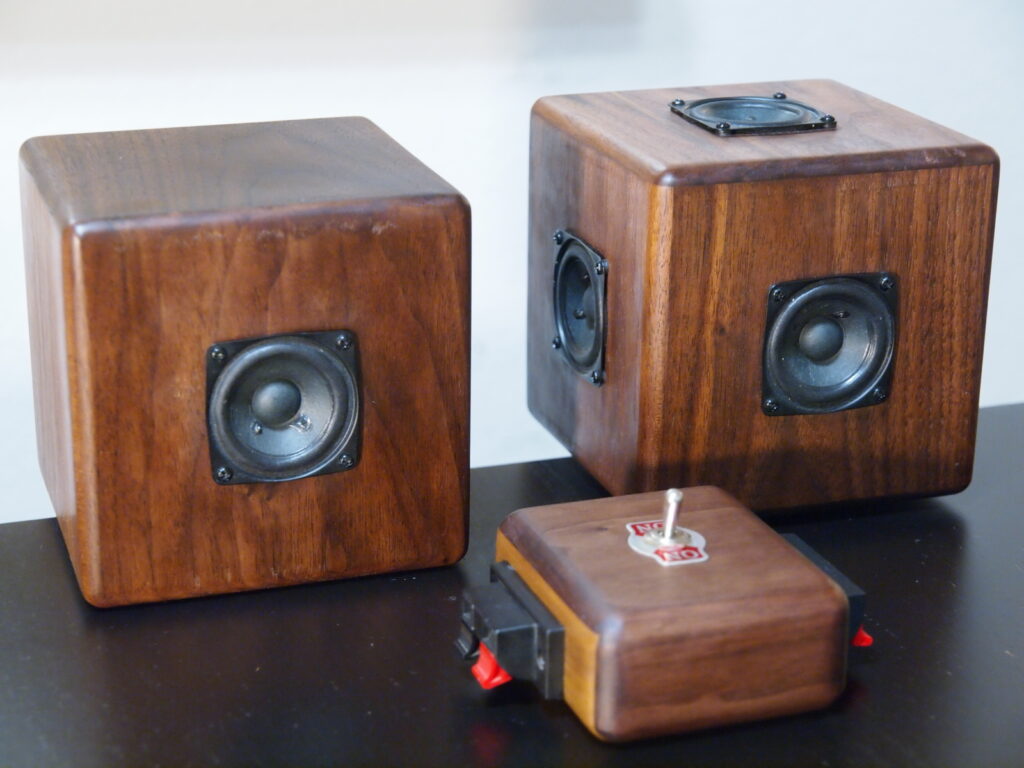
These are the prototype of the SCAE-01 ‘Dice K’. The left one has a single driver unit ($2, 1.5-inch diameter), and the right one has the same driver units in all the six faces (even at the bottom face). The initial concept of this project was actually a approximate ‘breathing sphere’ by an aligning six drivers in all the faces and drive them in the same phase. These prototypes were built as a proof of concept. I also made the 2-in-1-out switch, the object in front of the speakers with ON-ON switch on the top face. This devise is to switch the two speakers instantly while playing a music so that I can compare the impressions. The client and I enjoyed comparing these two speakers. The client also took them home and used it for a while. Although the sound produced by the ‘breathing sphere’ was very interesting and sounded definitely fuller than the single-unit one, we both had the same impression that having six driver units makes the sound muddy. This makes sense, considering that relative frequency response above 2-3kHz will be seriously lacking. It would be necessary to flatten the frequency response by designing a filter if I want to use it–this left a future project for me. After the experiment, I re-considered the design and came to the current orthogonal arrangement. This change of the idea was prompted accidentally. When I ordered 12 Wavecor FR084WA02 to Parts Express, they had only 4 in stock. Then I hit upon the idea of using only two drivers. Initially I thought of the dipolar design (exactly speaking, dual monopolar design because the two drivers are driven in the same phase) with the back-to-back placed 180 degrees alignment. But the client told me he preferred orthogonal alignment because backside of the speakers would be very close to the wall. So I determined to use the current orthogonal alignment design.
The analyses and predictions I relied on in this project were all qualitative. This was because I could not perform any measurement. I have all the tools and equipment for SCAE projects in my office in UC San Diego, where I could not get back to since last March.
